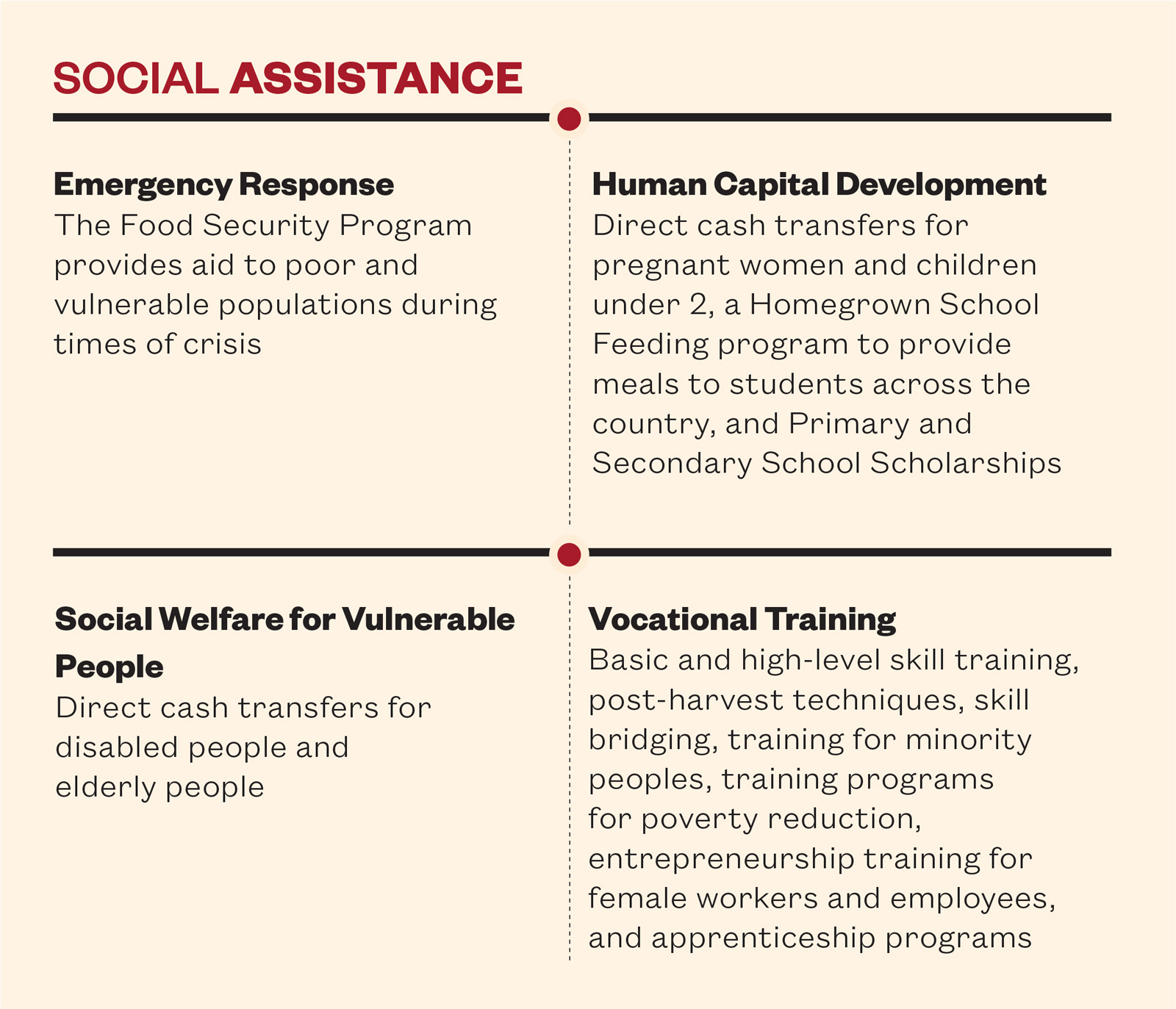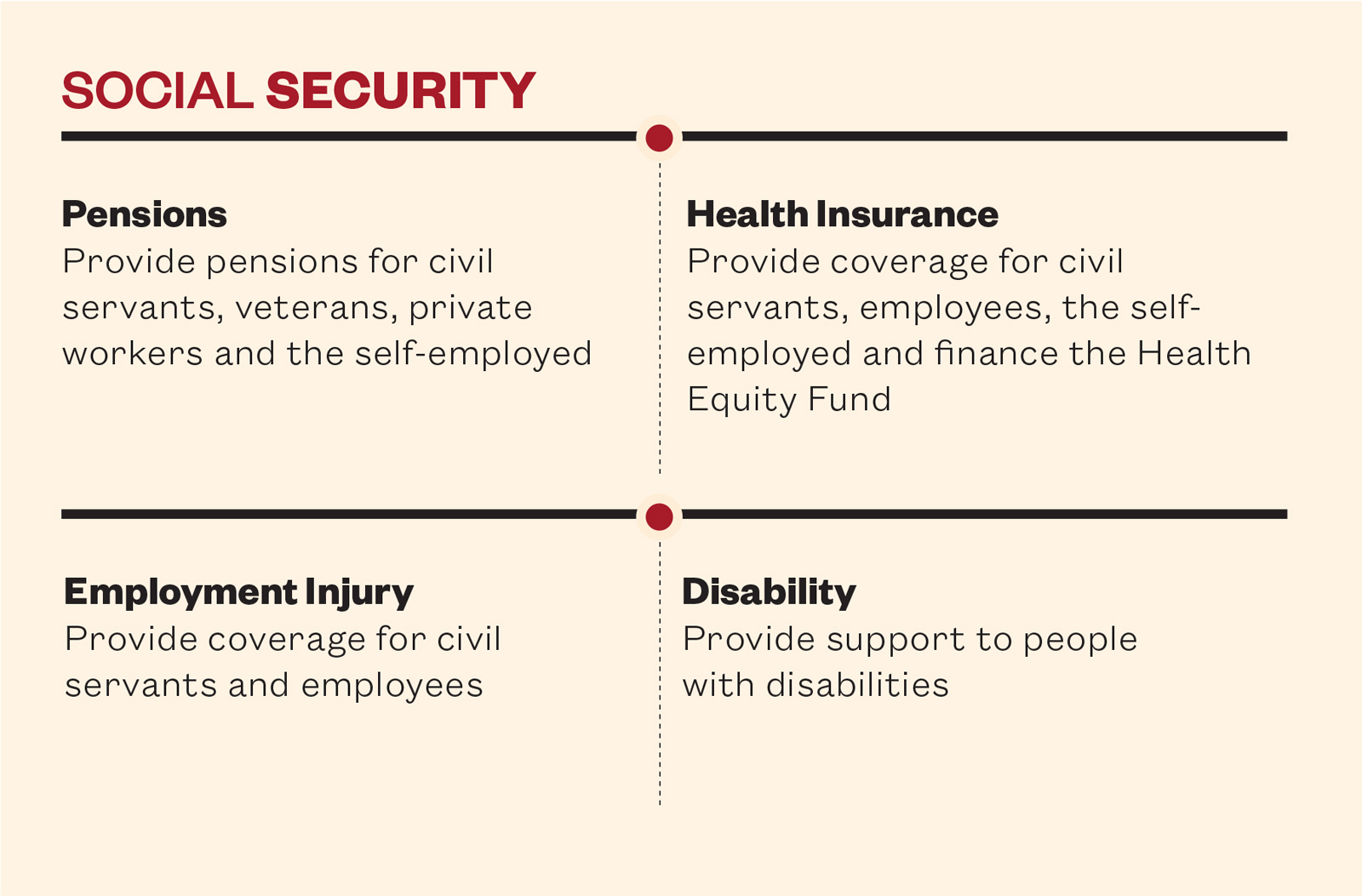Cambodia’s economic growth in the last decades has seen the nation become an increasingly popular destination for international investment. However, society at large has not kept up with this financial development, instead relying on the traditions of filial duty and collectivism to survive in a changing economic environment.
While the traditional social support structure of the family remains essential in Cambodia, changing demographics, a rapidly modernizing economic landscape, and environmental uncertainty may render them insufficient to handle future stresses.
The National Social Protection Policy Framework (NSPPF) is the Cambodian government’s strategy for strengthening society by targeting poverty with social assistance and protection programs. The expansive and ambitious framework will impact millions of lives and increase the social stability of Cambodia, producing a solid foundation for the future of the local economy and increase its appeal as a destination for foreign investment.
The design and deployment of the framework draws inspiration from other social protection systems – both in Europe as well as the surrounding region – and is a joint effort between 11 Cambodian ministries. Comprising two branches – Social Assistance and Social Security – the framework provides a roadmap to deploy these programs, as well as producing the bureaucratic infrastructure and digital tools that are necessary to accomplish these progressive goals.
The pension programs will allow all Cambodians to plan for their futures in ways that were not previously possible
Heng Sophannarith, NSSF
A central figure in the ongoing development and implementation of the framework, Dr. Chan Narith, is the Secretary-General of the National Social Protection Council (NSPC) – the government body responsible for the bulk of the coordination and monitoring of the ministries and programs. He has concerns about Cambodia’s demographics and the role they will play in the country’s future.

Cambodia has one of the youngest populations in Asia, with a median age of just over 26 years old. Such a large pool of economically active individuals is a resource with serious potential for investors, providing the labor that allows for a competitive market environment. However, according to Dr. Narith, without strong social infrastructure, this dynamic can also lead to tension.
He described the country’s labor pool today as “demographic dividends that you must take advantage of while you can.”
“You must transform the population into skilled laborers that can rise to new challenges in a diversified economy,” Dr. Narith said of these young workers, adding that this human resource “can become a burden if your education and training system is not as good as you want it to be.”
This has proven true in Cambodia, where, according to the 2018 PISA-D report, only 10% of children reach minimum proficiency in mathematics and 8% in reading. Providing the population, particularly the most vulnerable citizens, with a stable environment and a means to transition out of poverty is essential if Cambodia is to continue on its upward economic trajectory.

Cashing Dividends and Laying Foundations
To facilitate this transformation, a variety of vocational training programs are being designed to provide the necessary skills to help undereducated, poor and rural populations become valued economic contributors.
These training programs will focus on priority sectors, specifically construction, mechanical maintenance, information and communication technologies (ICT), manufacturing, and electronics. Organized in conjunction with the Ministry of Labour and Vocational Training, the programs will take place in training centers and utilize new and existing infrastructure.
Along with providing these services to unskilled individuals, the programs may eventually be expanded to those already active in the labor market, further broadening the potential benefits for Cambodia’s economic development.
Upskilling is just one facet of the framework, though. On the other end of the spectrum is the ability to provide workers with financial security as they age out of the workforce.
The framework’s social security schemes aim to expand to all Cambodians the pension programs that are currently only enjoyed by civil servants and veterans. These programs will provide employees of registered businesses as well as the large number of informal, self-employed workers, a level of security that, up to now, hasn’t been present in Cambodia.
Heng Sophannarith, the Director of the Policy Division for the National Social Security Fund (NSSF), the organization in charge of managing this aspect of the plan, believes expanding this system will improve the lives of Cambodians and produce the foundation for balanced development. “The pension programs will allow all Cambodians to plan for their futures in ways that were not previously possible. This will improve the social stability of the country, eventually leading to a more appealing business environment,” he explained.
An independent report by the UN Development Programme examining the NSPPF backs up Sophannarith’s optimism about the economic benefits of these programs: “The report provides evidence that these social protection policies do not have to come at the expense of economic growth – on the contrary, a holistic approach to social protection with a range of complementary schemes can promote economic progress and development.”
Strategy in Structure
The potential for positive change in Cambodia represented by these programs is undeniable, but such ambitions have to be coupled with an effective strategy and functional governing structure if they have any hope of success. This is especially true of this framework, with the multiple ministries and government bodies all cooperating towards a common goal.
When speaking about the fragmentation caused by all of these different actors, Dr. Narith explained the goal of producing a unified framework through the use of technology.
Technology creates reliability, but most importantly, it creates accountability and transparency
Dr. Chan Narith, Secretary General, NSPC
“The plan is to develop the digital social protection infrastructure that will connect all of these dots, without replacing or taking any ownership of the different operator’s roles. From these building blocks, we will continue to develop a fully scalable system.”
This methodical approach will eventually produce an umbrella of functionality with an emphasis on accountability and transparency in all aspects of the framework, especially when dealing with money.
“From the national treasury to the beneficiary, we don’t have middlemen. The treasury signs a check, you have a money transfer agent, and the beneficiary is the only person that actually receives cash,” Dr. Narith said, explaining the current cash benefits delivery method.
This process highlights the government’s acknowledgment of the role that technology can play in optimizing social programs.
“Technology creates reliability, but most importantly, it creates accountability and transparency,” Narith continued.

Even the bureaucratic structure itself will be shaped by these guiding principles. A three layer organizational framework will be composed of policy makers in the National Social Protection Council, the National Social Security Fund functioning as the operator facilitating services and a regulatory body overseeing actions and ensuring accountability.
There will also be mechanisms to allow ongoing adjustments to the framework and policies as the economic and social environment continues to develop, without sacrificing predictability.
“You don’t create a few pieces of regulation that stay there forever,” Narith said. “You create based on the evolution of the sector, but you don’t want to produce it in a way that business people don’t know the direction it will take.”

Promising Signs
Such a broad and sweeping set of programs will take time to roll out, however, there are already signals demonstrating the government’s ability to get things done.
Officials point to the fast tracking of direct cash transfers to at risk populations during the Covid-19 pandemic as cause for optimism. By expanding the ID Poor program that was developed in cooperation with Germany’s GIZ, the government has been able to provide support to those most affected by the resulting economic downturn.
Between June and October of 2020 over 85 million USD in relief money was supplied to households across Cambodia, providing essential aid to those most affected by the pandemic. According to the UNDP report, the rapid implementation of these cash transfers will have a major impact for these at risk populations. “For as long as it lasts, the new emergency social protection scheme in response to Covid-19, could lift over one million Cambodians out of poverty and improve the livelihoods of many more.”
Regarding the Covid-19 cash transfers as an indicator of the potential of the program at large, the report concluded, “This represents an unprecedented political stance and institutional progress towards more permanent and ambitious programmes.” The NSPPF is ambitious, and while the deployment of the framework will be gradual, it will not be piecemeal. The attention to detail, agility and guiding principles behind it all paint a picture of the framework as a living project, a roadmap to reorganize Cambodian society towards a model that will not only benefit all socioeconomic strata, but produce a more predictable and appealing environment for investors. Dr. Narith sees Cambodia’s path forward as one of inclusion.
“Everyone has their role to play in Cambodia’s growth. People must participate in the economic development of society, but they must also see the real benefits of this growth. Designing these programs and developing social protection in this country will promote social cohesion and build a strong foundation for the future.”
This article was first published in Globe Media Asia’s Focus Cambodia 2021-22 magazine.


